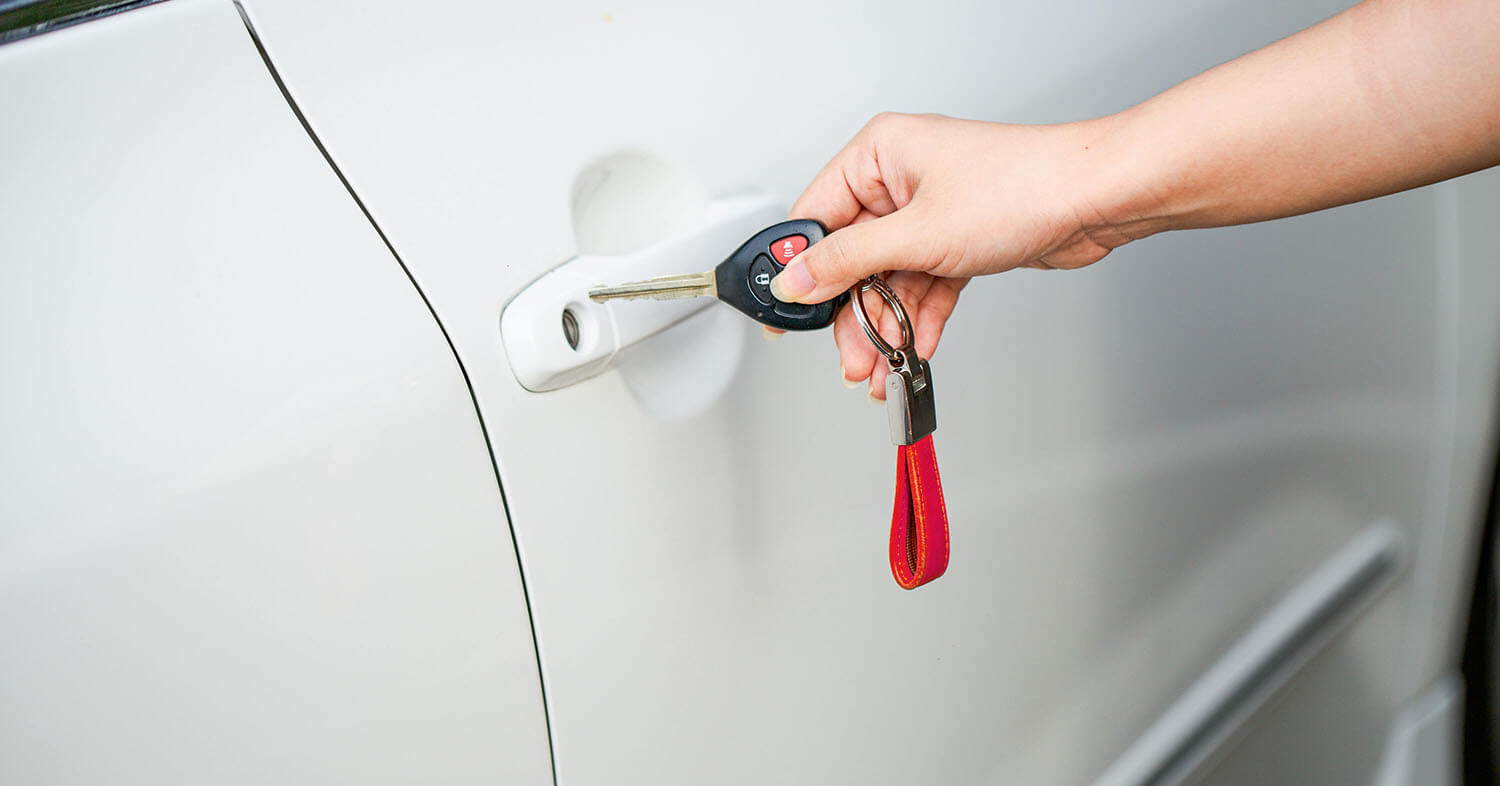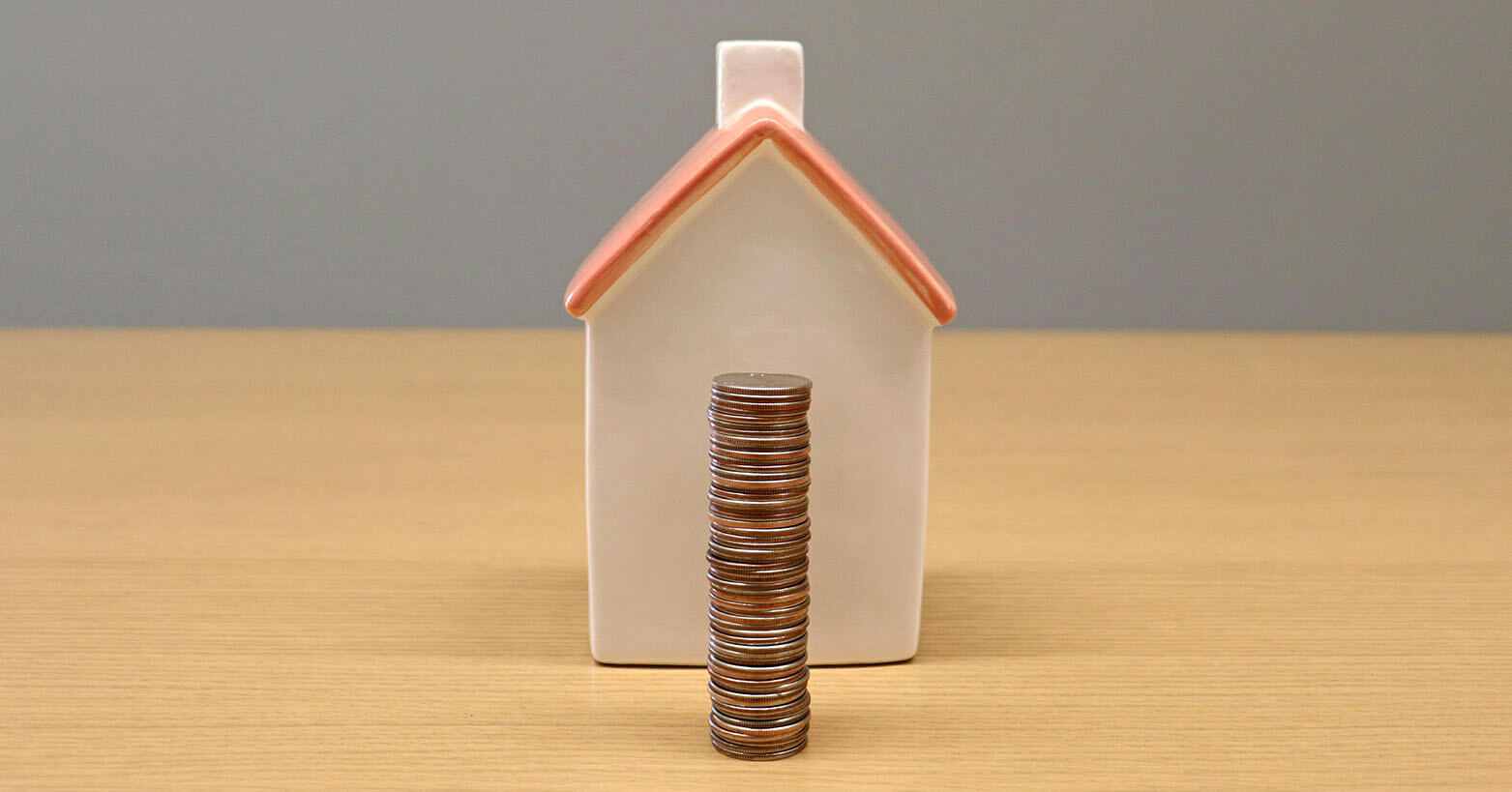The average used car is now listed at $25,499, according to auto trading experts Cox Automotive. And it is getting harder to find a bargain, as technical and safety advances create a bigger gulf between recent used cars and older stock that no longer meets consumer expectations. But with less than 0.1% of new cars sold for under $20,000 and every new vehicle taking its toll on the environment, buying secondhand remains a smart choice for many Americans.
However, prices have been notably volatile in recent times. Used car prices soared by 30% or more at the tail end of the pandemic, as new stock was in short supply. And while prices have fallen in general since 2023, they “can only go down so far because, during the pandemic, we produced 10 million less cars than we normally would,” says Pat Ryan, chief executive of car-shopping app CoPilot.
Market patterns also differ from city to city and state to state. So, following our study into the best and worst states for car repair costs, we compared thousands of used car listings like-for-like around America and calculated how the price premium you’ll pay — or the savings you could make — buying in one place over another. We also compared these results to 2023 prices to reveal the markets that are moving in the right direction.
What We Did
We analyzed listings for 14 popular car models from cars.com all across 150 major cities, removing cars priced under $1,000, with less than 50 miles or lacking information about the engine/fuel/transmission. Then, we adjusted their prices using a log-linear regression model (OLS) to normalize a list of parameters, including mileage, number of owners, etc. Finally, we ranked all locations by the price premium of used cars compared to the national average.
Key Findings
- In Alaska, a used car costs +9.70% more than the same car would on average across the country — the biggest price premium of any state.
- Miami is the cheapest major city to buy used, with cars costing -7.97% less than the national average for the same car.
- The price of a used car in North Dakota has fallen by -7.32% year-on-year against the national average — the biggest decrease of any state.
- The biggest annual price rise for used cars is in San Francisco, where prices are up +12.38% against the national average.
Alaska Sells America’s Priciest Used Cars
Alaska (+9.70% above national average), Hawaii (+9.26%) and Mississippi (+8.64%) are the most expensive states in America to buy a used car. While supply is always a tricky business in the non-contiguous states, Mississippi joins Alaska and Hawaii in the top three, having suffered the second-highest price increases of any state over the past year (see North Dakota Experiences Dramatic Price Drop, below).
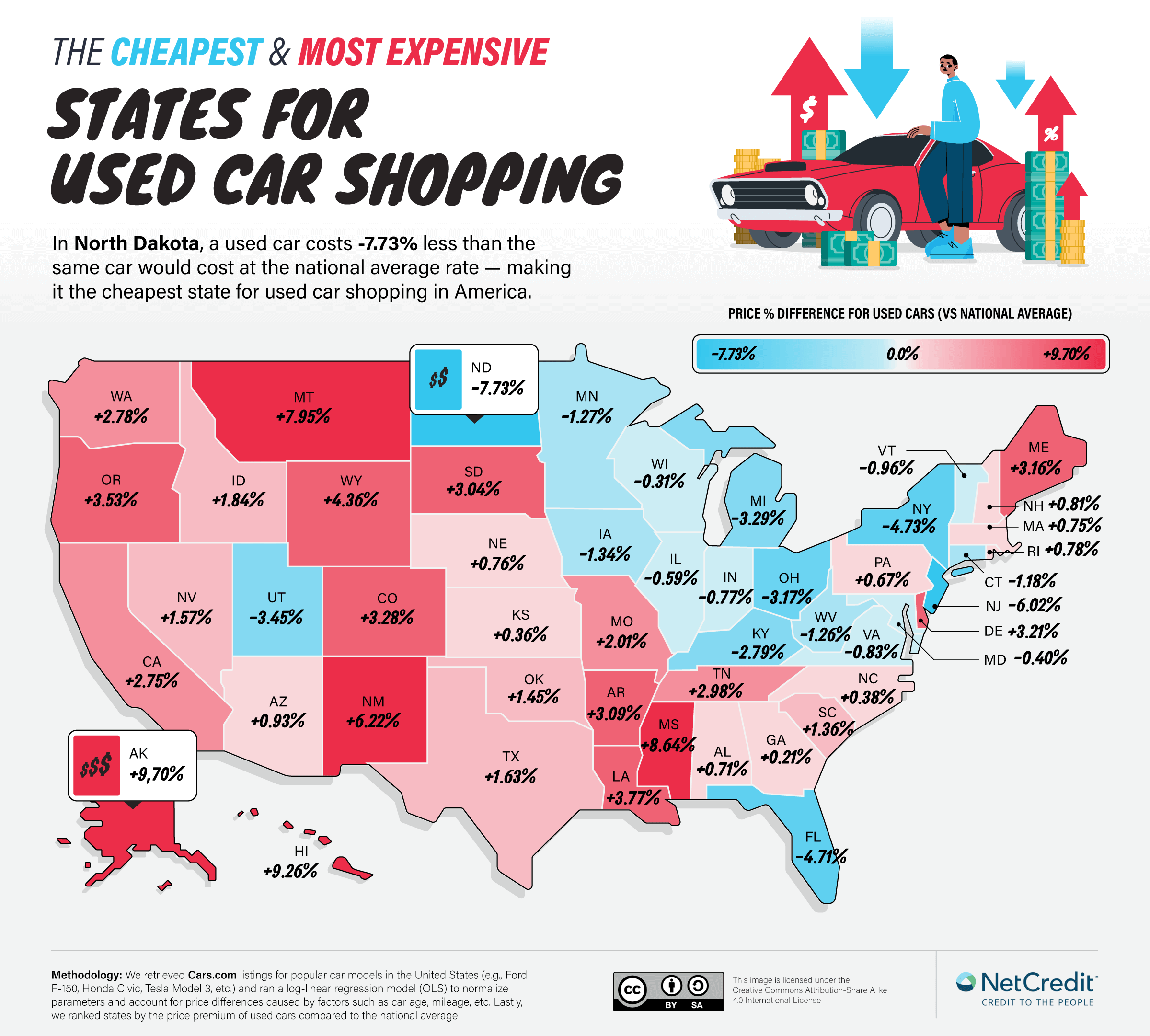 North Dakota has America’s cheapest used cars, with vehicles costing -7.73% less than the national average, when comparing listings like-for-like. This follows a dramatic fall in prices in the state (see below). New Jersey (-6.02%) is not far behind, despite the end of tax breaks for new electric vehicles in October, which might be expected to drive up demand for used cars. The most popular used car in New Jersey is the Honda Civic.
North Dakota has America’s cheapest used cars, with vehicles costing -7.73% less than the national average, when comparing listings like-for-like. This follows a dramatic fall in prices in the state (see below). New Jersey (-6.02%) is not far behind, despite the end of tax breaks for new electric vehicles in October, which might be expected to drive up demand for used cars. The most popular used car in New Jersey is the Honda Civic.
North Dakota Experiences Dramatic Price Drop
Used car prices in North Dakota have fallen -7.32% against the national average since 2023. However, while prices may be low, interest rates are high — so it’s worth pausing to ensure your financing deal is amenable before being seduced by a small price tag. It is also essential to check if the used car is cheap because of the market and not because it comes with nasty surprises: North Dakota’s ‘Lemon Law’ protects new car buyers against faulty goods but does not protect those buying used vehicles.
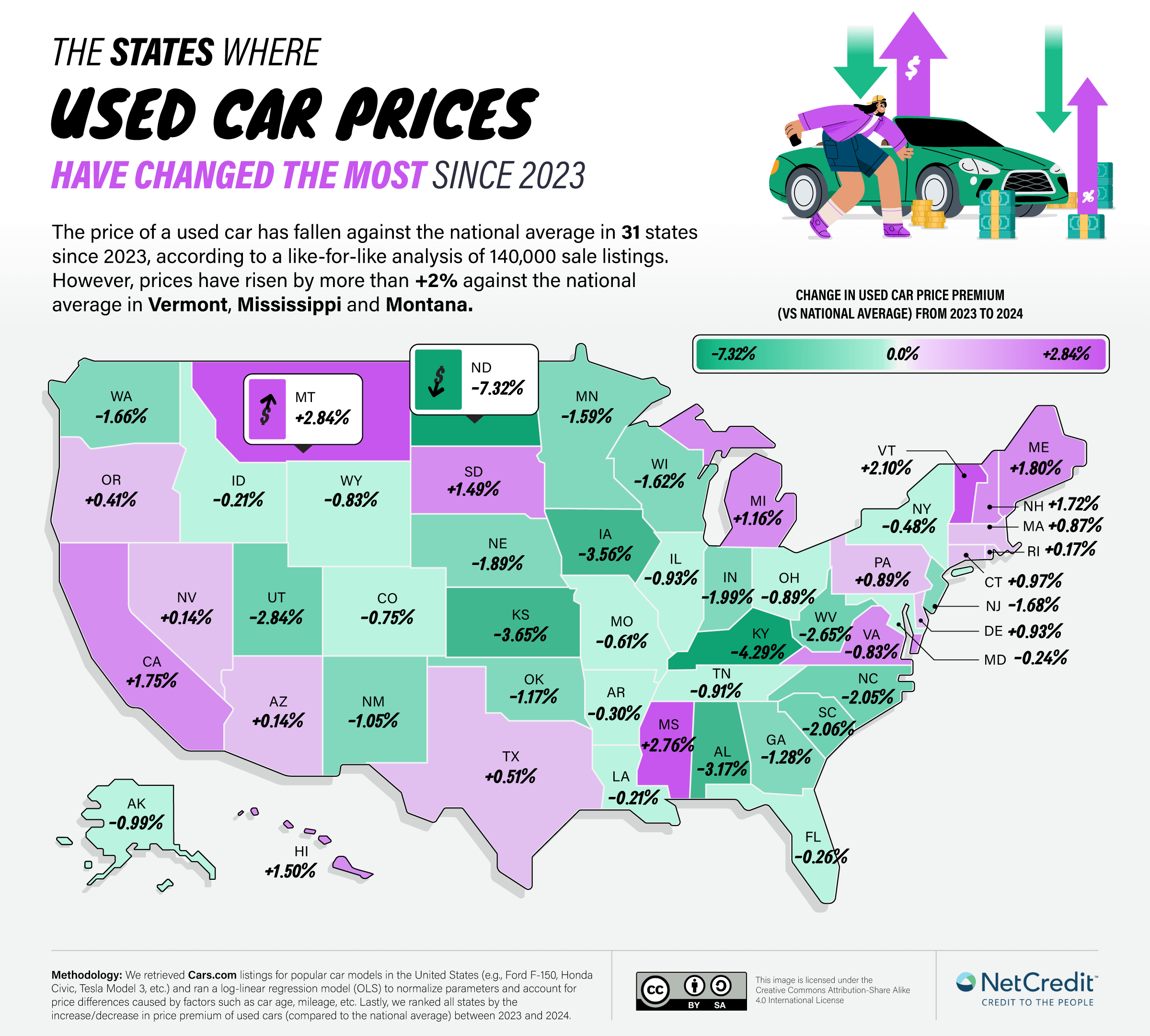
No state has seen a price rise greater than +3% against the national average. Montana has the fastest price growth, with +2.84% increase year-on-year. Montana actually has more cars registered per capita than any other state, although this seems to be due to people taking advantage of a loophole that allows cars registered in the state to avoid or minimize taxation. However, gasoline consumption is on the rise in Montana, against national trends, suggesting that car use is increasing in this sparsely populated state, even as more tightly-packed areas move towards greater use of public transit.
Miami is the Cheapest Major City to Buy Pre-Owned
In Bakersfield, California, used cars cost +10.05% more than the national average — making it the priciest major city in America. This represents a +10.05% price rise locally, year-on-year, against the national average. There has been a crime surge at Bakersfield Auto Mall, which has led to dealerships taking on extra security and recoupment costs.
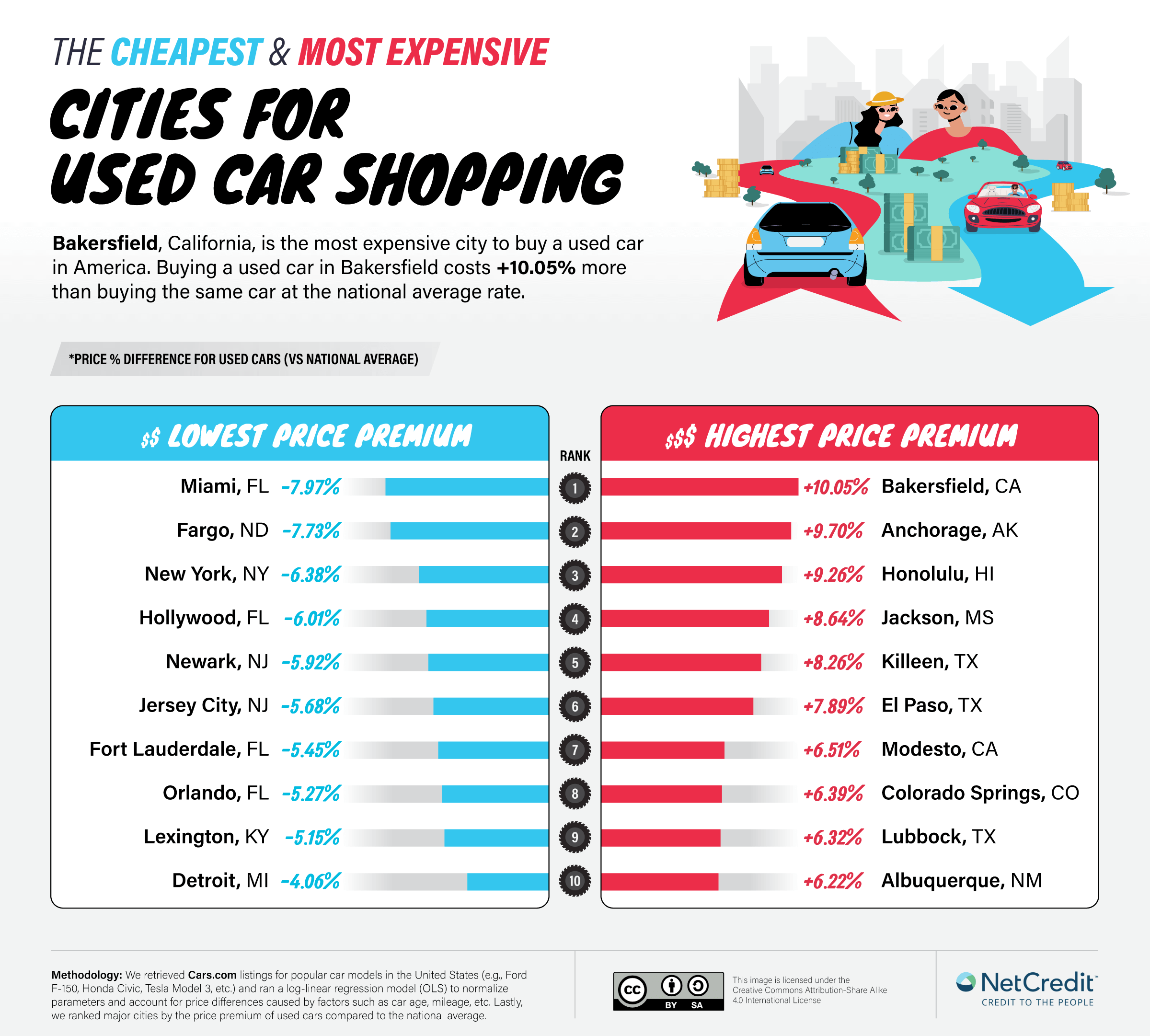
Miami (-7.97%) and Fargo (-7.73%) are neck and neck to be the cheapest city for used cars. And the comparative price of pre-owned vehicles against new ones is swaying the market towards the more sustainable option. “I was never a used-car buyer, because I just felt like that was somebody else’s nightmare that I didn’t want,” one Florida auto buyer told Bloomberg upon buying his first used car at the age of 61. “But what choice did I have?”
San Francisco Used Car Prices Accelerating Fastest
San Francisco leads four California cities with the fastest-growing used car prices in America. The price of a used car has risen +12.38% against the national average in San Francisco since 2023. “I feel like there’s a little bit of an inflection point — you don’t want anything that’s too, too old,” San Franciscan Julie Rice told the Mercury in March, adding that looking at used car prices “starts to cross into the territory of, ‘Why don’t we get a new car?’” There is an alternative: San Francisco is the city where you can save the most money by switching to public transit, according to the American Public Transportation Association.
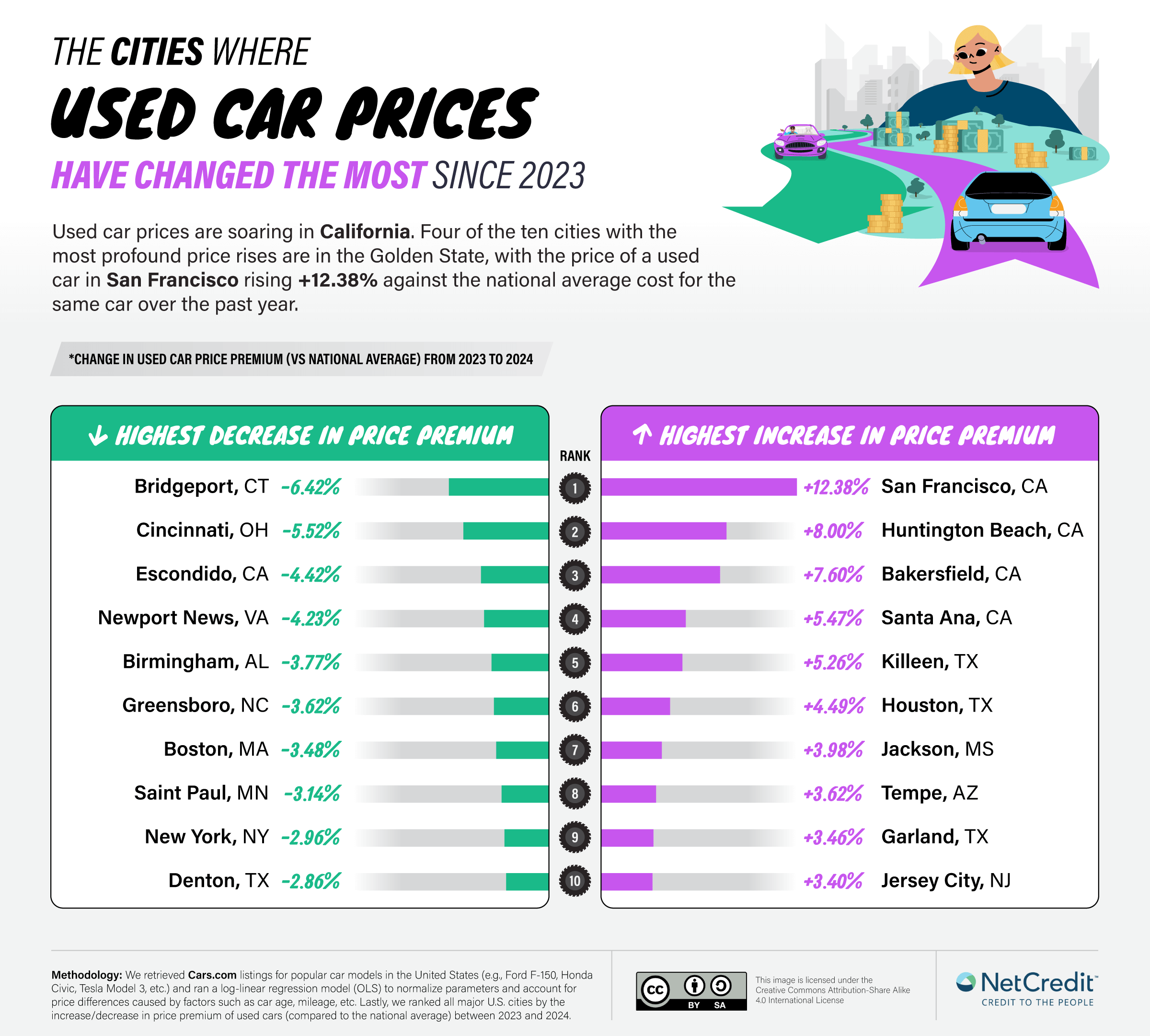
Two cities have enjoyed a price decrease of more than -5% compared to the national average: Bridgeport, Connecticut (-6.42%), and Cincinnati (-5.52%). Of course, it’s essential to verify the buyer and the vehicle before handing over your money: two used car sellers in Connecticut were recently charged with a list of crimes from third-degree telephone fraud to conspiracy to commit illegal tampering with an odometer after selling a car with 121,000 miles on it for cash in a Monroe car park. “It was purchased by a dealership in Massachusetts then resold to an auction house in Connecticut,” reported Monroe Police Lt. Michael Sweeney. “It was purchased at auction 13 days earlier with 219,000 miles.”
Shopping Around
Shopping for a used car can turn up surprises, both good and bad. Seeking out cheaper markets and remaining open-minded about what’s available is one way to keep prices down when other means of saving money fail.
When you do find a vehicle that interests you, negotiating no longer has the same power because “we have so much information, it’s very difficult to charge a different price from your competitors,” says Ivan Drury, director of insights at car shopping guide Edmunds. This being the case, it is worth not only researching the same model across multiple dealers but also trying to get a deal on financing, extras or incentives. With some 1.66 million used cars sold each year, it is possible to find the deal for you.
Methodology
First, we curated a list of popular cars in the United States, including the following models: BMW X5, Buick Encore, Chevrolet Equinox, Dodge Durango, Ford Escape, Ford F-150, Honda Civic, Jeep Grand Cherokee, Mercedes-Benz C-Class, Nissan Altima, Porsche Cayenne, Tesla Model 3, Toyota Camry and Toyota Tacoma.
Next, we retrieved from Cars.com all available listings (as of November 2024) for these cars across 150 major cities. We removed listings for cars priced under $1,000, cars with less than 50 miles, cars lacking information about the engine/fuel/transmission and cars with a build date later than 2024.
After cleaning the data, we were left with 198,808 listings spanning locations across all U.S. states. To account for price differences caused by factors such as car age, mileage, etc., we ran a log-linear regression model (OLS) that normalized a list of parameters:
- Generation
- Trim
- Mileage
- Personal Use
- Owners
- Accidents
- Car Model
- Transmission Type
- Location
Lastly, we removed all cities with fewer than 100 cars or where the coefficient of the location was not significant at 90% confidence, before ranking all locations by the price premium of used cars compared to the national average.


